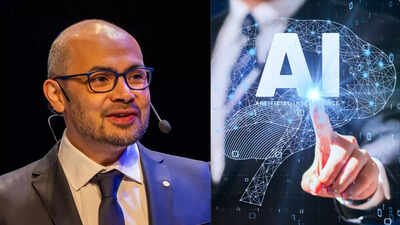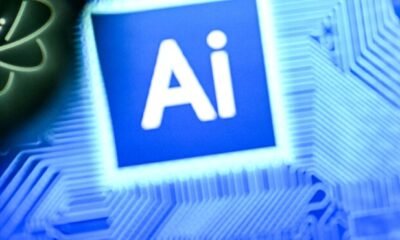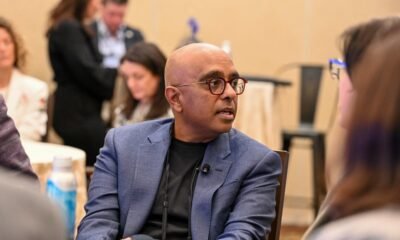Tools & Platforms
I’m chief legal officer at a $4 billion IT unicorn and I’ve got Gen Z advice for leaders looking to reimagine entry-level work in the age of AI

LinkedIn’s chief economic opportunity officer recently warned that AI is “breaking” entry-level jobs that have historically served as stepping stones for young workers. As Aneesh Raman wrote in The New York Times, “Breaking first is the bottom rung of the career ladder.”
AI tools are performing simple coding and debugging tasks that junior software developers once did to gain experience, along with work that young employees in the legal and retail sectors traditionally handled. Wall Street firms are also reportedly considering steep cuts to entry-level hiring in light of this.
The implications go way beyond individual hardship — they threaten the foundation of how organizations build expertise, maintain security and sustain innovation. However, there are things all organizations can do now to help.
The risks of AI over-reliance in the workforce
Hasty AI adoption at the expense of hiring and developing human workers creates serious security vulnerabilities. AI is only as effective as its inputs, and the interpretation and action steps that follow are only as sound as the skills and contextual understanding of the people involved. In short: reducing human oversight creates breeding grounds for security gaps.
Indeed CEO Chris Hyams recently noted that while AI can’t completely replace a job, “for about two-thirds of all jobs, 50% or more of those skills are things that today’s generative AI can do reasonably well, or very well.” These shifts underscore the urgent need for organizations to take a balanced approach, investing thoughtfully in both emerging technology and human talent. To shape a sustainable future of work, neither people nor progress can be left behind.
This challenge is particularly acute in fields like cybersecurity, where gaining hands-on experience is crucial. Today, many cybersecurity roles require experience that young professionals can’t acquire because entry-level positions that build that experience no longer exist or have been automated away. An increasing number of cybersecurity job postings list artificial intelligence skills as a requirement. Yet research shows that 44% of professionals say their companies have invested in AI across the organization while employees lack adequate skills and training to use these tools effectively — meaning professionals are being left behind and there is a gap in the skills needed to manage AI investments correctly. If this is happening now, consider how these changes could reshape our workforce in the next five years and beyond.
Heavily leveraging AI while human workers at all levels lack the training and skills to manage it appropriately — that is a recipe for significant risks. When you can’t build a pipeline of talent from the ground up, you end up with senior professionals who lack the diverse perspectives and fresh thinking that come from working alongside newer team members.
How entry-level work is being redefined
As organizations increasingly lean on AI to handle tasks once reserved for junior employees, the danger isn’t just the disappearance of foundational career steps, it’s the erosion of the very systems that foster growth, innovation and security. Overreliance on technology threatens to sever the pipeline that develops future experts, leaving critical gaps in both skills and perspective.
LinkedIn COO Dan Shapero says, “When I was at Bain, a lot of the time I spent was making slides and going to the library to figure out research reports. All of that is now automated. Bain still hires scores of recent graduates. They just do different parts of the process.”
Rather than eliminating entry-level jobs, organizations should reimagine them for a new era—where early-career professionals are empowered to work alongside AI, learning higher-order skills instead of just routine tasks. Use AI to augment new workers, not replace them. Allow junior employees to focus on strategy, creativity, relationship-building, and complex problem-solving while AI handles routine tasks. This approach requires treating AI like a new hire — every AI tool should be evaluated, supervised and developed like an employee, not simply deployed and forgotten.
Successful workforce transitions require structured evaluation processes for each potential AI use case. This evaluation should include a return-on-investment analysis not just in terms of dollars and hours saved, but also in terms of human impact. When an AI tool eliminates repetitive tasks, the affected employee should be retrained for a more strategic role, making AI a catalyst for internal mobility rather than displacement.
Organizations need cross-functional governance that ensures decisions aren’t just compliant but human-centered. Representatives from IT, privacy, product, security, and HR should collaborate to balance innovation with workforce development. When GenAI first captured widespread attention in 2023, smart companies built sustainable AI governance models, prioritized transparency and tackled employee displacement through reinvention rather than layoffs.
Making meaningful change
As leaders, we need to ask ourselves: What are we doing to ensure the next generation can build the experience they need to become our future leaders? Here is a starter kit:
Develop AI fluency as a core competency. Cultivating AI fluency must become a cornerstone skill for tomorrow’s workforce. Increasingly, job candidates will need to demonstrate not only their comfort with AI tools, but also their ability to harness these technologies as proactive problem-solvers and innovators. This is the new generation’s biggest advantage in the job market.
Invest in apprenticeships and mentorship programs. Create pathways where experienced professionals work directly with newcomers on real projects, not just theoretical training. Career pathing and goal setting can develop internal talent effectively. Support teams can allow engineers to explore different roles within the company, successfully transitioning employees into specialized roles like cybersecurity.
Embrace upskilling as a core business function. Teaching current employees new skills is a great start, but that’s not even half the challenge here. Let’s also approach this by creating new types of roles that didn’t exist before. Don’t assume competency. (You know what they say about assuming!) Recognize that professionals — in both new and legacy roles — need adequate training to use AI tools effectively.
Support workforce development initiatives. Creating curricula and engaging with educational institutions can help address skills gaps while supporting corporate social responsibility efforts. Legislative initiatives that enhance accessibility of cyber training and education through scholarship programs for two-year degrees at community colleges and technical schools can strengthen the talent pipeline.
Maintain explicit commitments to workforce retention. Even when specific jobs change, it’s important to find new places for affected employees within the organization. Why does this matter? It sends the message that reliable AI requires human oversight, and that the goal should be redefining roles rather than eliminating them. (Big difference!)
Individual company programs won’t resolve all of this, but collective action can make a difference. Instead of looking at this as a massive problem, why not see this as an opportunity to shape how AI transforms work? We can start now, acting deliberately and with the next generation in mind.
The opinions expressed in Fortune.com commentary pieces are solely the views of their authors and do not necessarily reflect the opinions and beliefs of Fortune.
Tools & Platforms
The Hartford Opens Technology Center in Hyderabad to Advance Innovation and AI Capabilities | Machine Maker – Latest Manufacturing News | Indian Manufacturing News – Latest Manufacturing News | Indian Manufacturing News
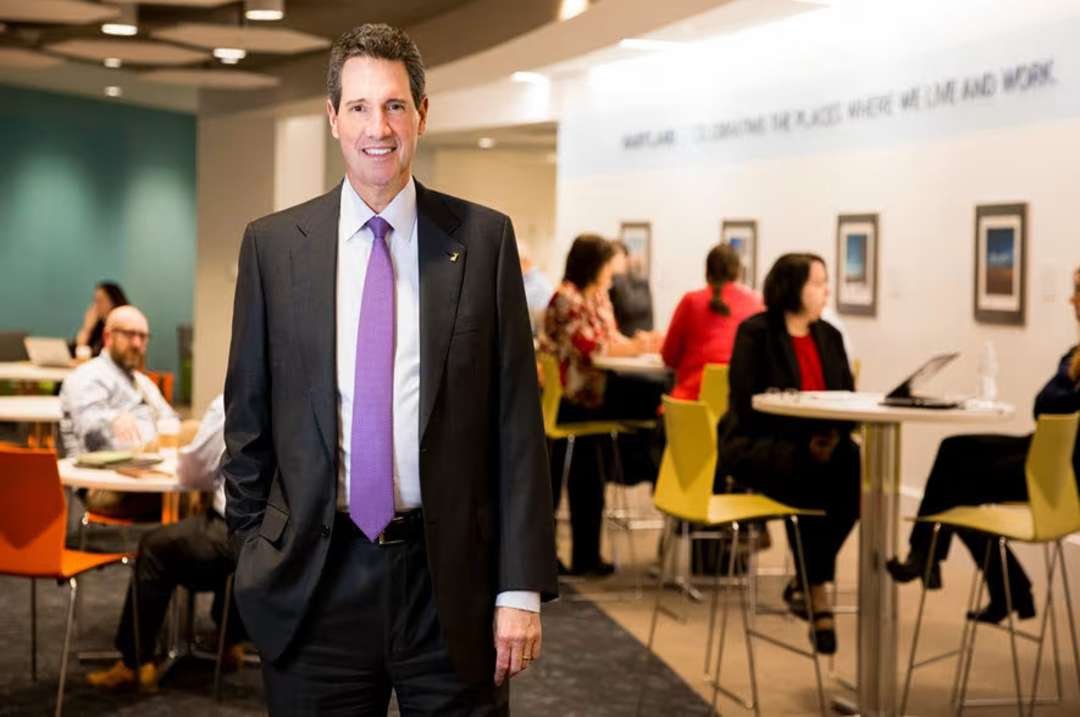
The Hartford, a prominent U.S.-based insurance provider, has announced the launch of its new technology center in Hyderabad, India. This expansion represents a major step in the company’s technology transformation and underscores its focus on innovation, agility, and global talent development.
The new center will serve as a hub for engineering excellence with a focus on Artificial Intelligence (AI), digital transformation, and cutting-edge technology solutions. Designed to foster a start-up-like environment, it will support rapid prototyping and experimentation across global teams. The Hyderabad facility will complement The Hartford’s existing technology centers in Hartford, Connecticut; Chicago, Illinois; and Charlotte, North Carolina, contributing to the company’s broader innovation strategy.
“This is an exciting time for The Hartford as we accelerate the integration of AI as a core driver of innovation in our products and processes,” said Shekar Pannala, Chief Information Officer at The Hartford. Jeff Hawkins, Chief Data, AI and Operations Officer, added, “We are not just adopting new technologies, but expanding our capabilities in data analytics and AI to deliver personalized, efficient, and reliable customer experiences.”
To ensure a smooth setup and operational success from the start, The Hartford has partnered with Capgemini, a global leader in business and technology transformation. With over 1.5 million engineering graduates produced annually, India remains a hub for technical expertise. Hyderabad’s infrastructure, strategic location, and vibrant innovation ecosystem make it an ideal choice for the new center. The Hartford’s presence in India is expected to create career opportunities for professionals skilled in AI, data science, cloud computing, and digital engineering.
Founded in 1810, The Hartford is a Fortune 200 company with more than 19,000 employees worldwide, headquartered in Hartford, Connecticut. It supports millions of businesses of all sizes and tens of millions of individuals and families, helping them confidently navigate challenges and mitigate risks.
With over 200 years of underwriting, actuarial, and risk management expertise, along with a decade of digital modernization efforts, The Hartford is leveraging AI and advanced analytics to enhance decision-making and unlock new value. The company is actively recruiting technology professionals in India who are eager to shape the future of insurance through innovation.
The Hartford is a leading provider of property and casualty insurance, employee benefits, and mutual funds. Renowned for its expertise spanning more than two centuries, the company is recognized for its commitment to service excellence, sustainability, trust, and integrity.
Tools & Platforms
AI Thinking Cap Transforms Thoughts into Text Seamlessly
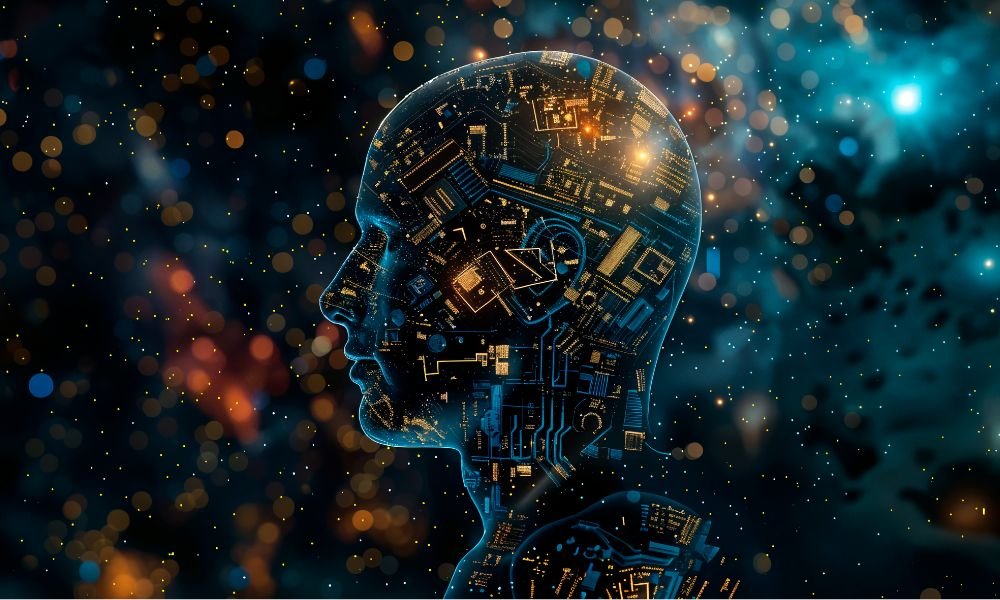
An AI-powered cap is redefining communication by using advanced sensors and AI to translate brain signals into text, making it one of the most innovative AI wearable thought devices today.
Imagine wearing a cap that can instantly turn your thoughts into text without speaking or typing. This is no longer science fiction. The new AI thinking cap is a revolutionary invention that uses artificial intelligence to decode brain signals and convert them into written words. This breakthrough innovation is set to change how people communicate, especially those with speech impairments or disabilities.
This AI-powered cap is a leap forward in wearable technology, combining advanced sensors and machine learning to capture and interpret neural activity. As an AI wearable thought device, it provides a seamless, hands-free experience, allowing users to communicate faster and more naturally than ever before.
What is the AI Thinking Cap?
The AI thinking cap is a wearable device designed to read brainwaves and transform thoughts into text in real time. Unlike traditional speech-to-text tools, this cap bypasses vocal cords altogether, decoding signals directly from the brain.
Equipped with sensors that monitor electrical activity, the cap sends data to an AI system that processes the signals and translates them into readable text. This innovative wearable translates thoughts with impressive accuracy, enabling users to communicate without the need for speaking or typing.
This technology has the potential to revolutionize communication for people with physical disabilities, allowing them to express themselves independently and effortlessly. It also offers new possibilities for multitasking and quick messaging in everyday life.
How the AI-Powered Cap Works
The secret behind the AI-powered cap lies in its blend of brain-computer interface technology and artificial intelligence. The cap’s sensors detect subtle brain signals associated with language processing. These signals are then analyzed using machine learning algorithms trained to recognize patterns corresponding to specific words or phrases. Once interpreted, the AI system converts these neural signals into text, which can be displayed on connected devices like smartphones, tablets, or computers.
The entire process happens almost instantaneously, offering users a smooth and natural communication flow. This AI wearable thought device continuously improves through user interaction, learning individual brain patterns to increase accuracy over time. This personalized adaptation makes the cap more effective for each user, whether they are writing a message, controlling smart home devices, or even creating content hands-free.
Benefits and Potential Applications
The AI thinking cap offers a wide range of benefits, making it one of the most exciting developments in wearable technology today:
- Enhanced Communication: For people with speech or motor impairments, the cap provides an unprecedented way to communicate independently.
- Hands-Free Convenience: Users can write emails, send texts, or control devices without lifting a finger.
- Increased Productivity: Multitasking becomes easier when thoughts can be directly translated into text during meetings or while working.
- Accessibility: The device can serve as a vital tool for those with disabilities, improving quality of life.
Beyond personal use, this wearable translates thoughts in ways that could transform industries such as healthcare, education, and even entertainment. Imagine classrooms where students can express ideas silently or artists crafting digital works with thought alone.
Challenges and Future Outlook
While the AI-powered cap shows great promise, it also faces challenges. Accurate translation of complex thoughts remains difficult, and the technology requires extensive calibration to individual brain patterns. Privacy concerns about reading brain activity also need careful attention.
However, ongoing research is rapidly improving the device’s accuracy and usability. As AI algorithms get smarter and sensor technology advances, the cap is expected to become more affordable and accessible. This will open the door for widespread adoption, making the AI thinking cap a staple in the future of communication technology.
Tools & Platforms
Setback for Apple? Key AI head executive Robby Walker could leave amid delays to Siri upgrade
Apple is set to lose one of its most senior artificial intelligence executives, with Robby Walker preparing to leave the company next month, according to a Bloomberg report citing people familiar with the matter.
Walker, who has been with the technology giant since 2013, currently serves as senior director of Apple’s Answers, Information and Knowledge team, a role he assumed in April. He previously oversaw the Siri voice assistant before its management was transferred earlier this year to Craig Federighi, Apple’s software chief.
AI challenges and departures
His departure comes as Apple faces mounting scrutiny over its cautious approach to AI development. While rivals have raced ahead with advanced models, the iPhone maker’s Apple Intelligence suite, including its integration of ChatGPT, has rolled out slowly, and a major update to Siri has been delayed until 2026.
Apple has seen a string of AI specialists exit in recent months, with several joining Meta Platforms. Those moves included Ruoming Pang, who headed Apple’s AI models, alongside researchers Mark Lee and Tom Gunter, all of whom have joined Meta’s Superintelligence Labs division.
Reports earlier this year suggested that Apple CEO Tim Cook had shifted oversight of Siri to Mike Rockwell, vice president of the Vision Products Group, amid concerns about the performance of AI chief John Giannandrea.
Recent product launch and AI strategy
At its annual product launch last week, Apple unveiled new iPhone models, including the slimmer iPhone Air, but offered little clarity on how it intends to match competitors such as Google, which has highlighted its Gemini AI technology in its latest devices.
Meanwhile, the US Food and Drug Administration (FDA) has approved a new feature on Apple smartwatches designed to detect signs of hypertension, the regulator confirmed on Friday.
Apple introduced the blood pressure monitoring capability at its September 9 event, which also saw the unveiling of a refreshed iPhone range, including the slimmer iPhone Air.
The hypertension alert feature will be available on Apple Watch Series 9, Series 10, Series 11, and the higher-end Ultra 2 and Ultra 3 models before the end of September. Apple said it plans to make the feature accessible in around 150 countries and regions, including the United States and the European Union.
(With inputs from Reuters)
-

 Business2 weeks ago
Business2 weeks agoThe Guardian view on Trump and the Fed: independence is no substitute for accountability | Editorial
-
Tools & Platforms1 month ago
Building Trust in Military AI Starts with Opening the Black Box – War on the Rocks
-

 Ethics & Policy2 months ago
Ethics & Policy2 months agoSDAIA Supports Saudi Arabia’s Leadership in Shaping Global AI Ethics, Policy, and Research – وكالة الأنباء السعودية
-

 Events & Conferences4 months ago
Events & Conferences4 months agoJourney to 1000 models: Scaling Instagram’s recommendation system
-

 Jobs & Careers2 months ago
Jobs & Careers2 months agoMumbai-based Perplexity Alternative Has 60k+ Users Without Funding
-

 Podcasts & Talks2 months ago
Podcasts & Talks2 months agoHappy 4th of July! 🎆 Made with Veo 3 in Gemini
-

 Education2 months ago
Education2 months agoVEX Robotics launches AI-powered classroom robotics system
-

 Education2 months ago
Education2 months agoMacron says UK and France have duty to tackle illegal migration ‘with humanity, solidarity and firmness’ – UK politics live | Politics
-

 Podcasts & Talks2 months ago
Podcasts & Talks2 months agoOpenAI 🤝 @teamganassi
-

 Funding & Business2 months ago
Funding & Business2 months agoKayak and Expedia race to build AI travel agents that turn social posts into itineraries








